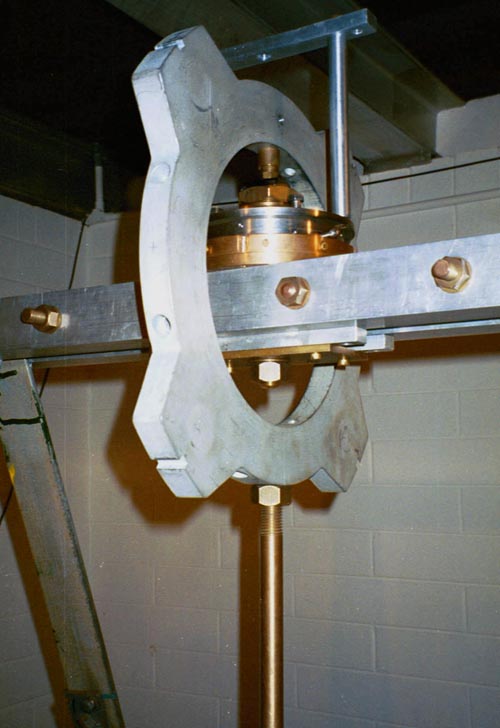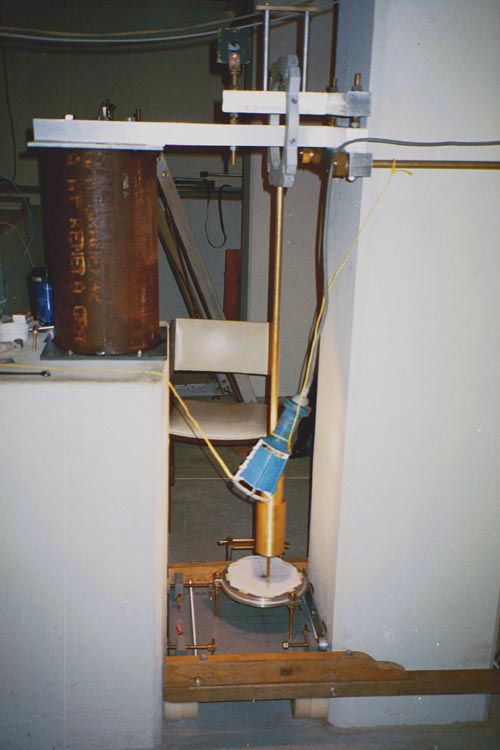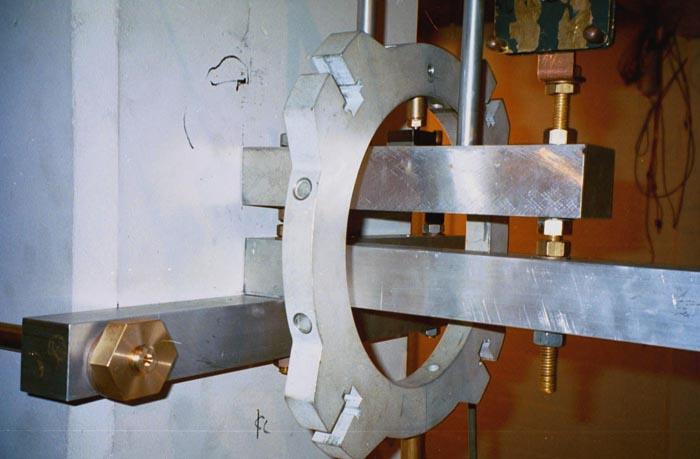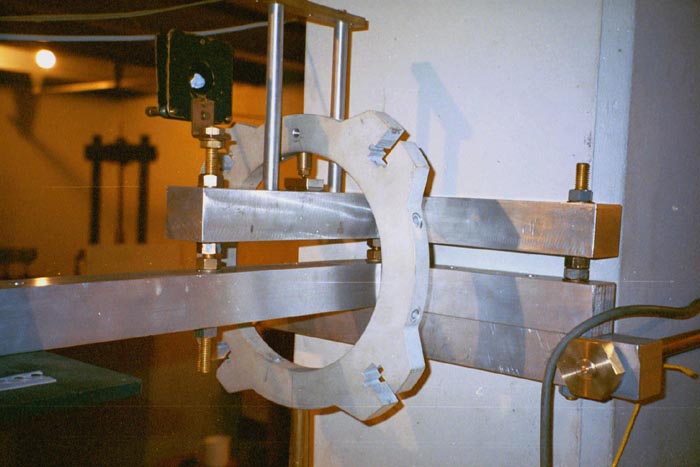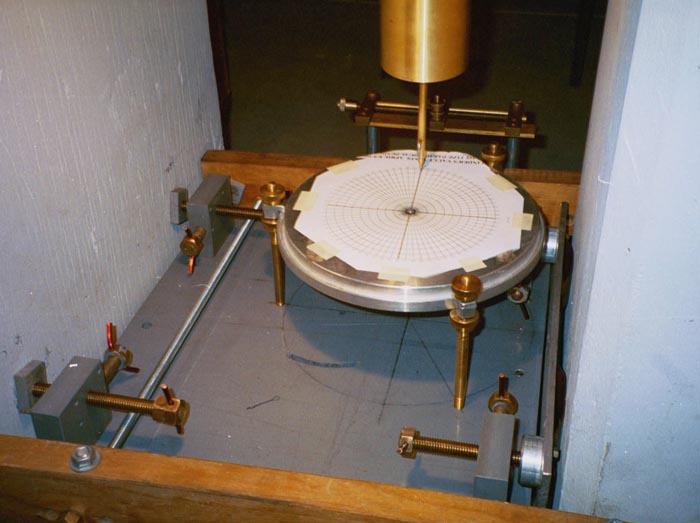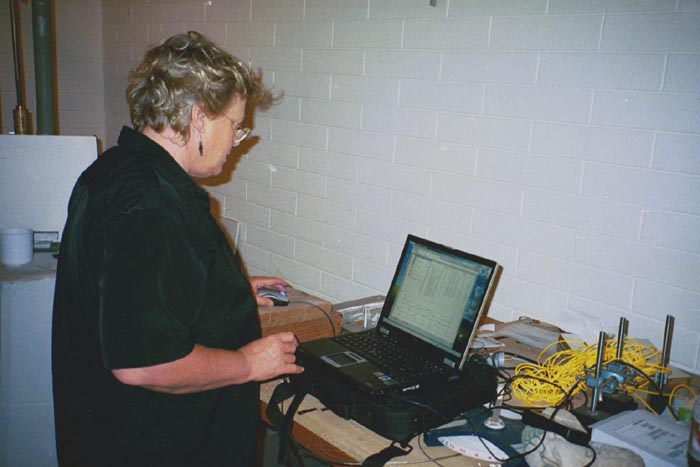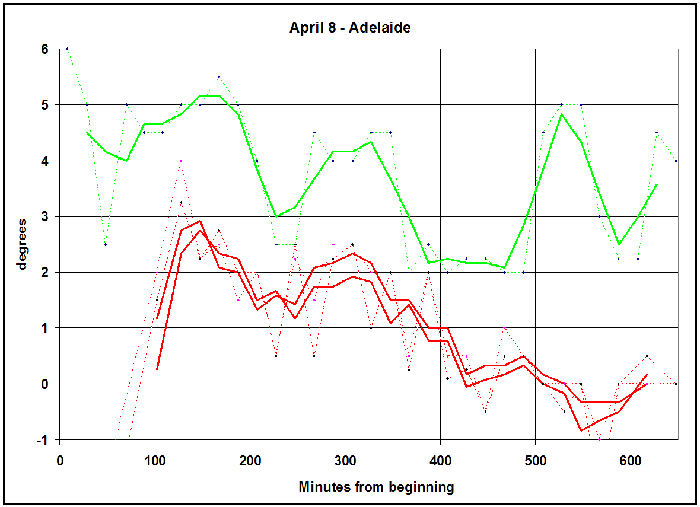
A closer view of the pendulum in its frame: The stirrup with the ball support: The measurement table for this mobile pendulum, which has been dubbed "Scheherazade": An overall view of the second pendulum,mounted between a heavy lump of concrete (which originally served as a workbench for the seismographs), and a solid concrete pillar: A first close-up of the stirrup ring and ball support of this pendulum: A second close-up of the stirrup: The measurement table: Susan Gummer, who helped with the observations: Starting from 14:30 UT on 8 April 2005, the team obtained the precession curves shown in this chart: The solar eclipse started at about 19:00 UT, quite near Adelaide, thus at about 250 on the horizontal axis in this chart. No particular effect due to the eclipse can be discerned in the graphs. But consider the clearly visible, and extraordinary, undulatory configuration of the curves! The two pendulums were well separated and could not influence one another directly due to transmission of vibrations. Nevertheless, it is very clear that they were behaving in a strongly correlated manner. This constitutes an unknown phenomenon, and it must be considered as being of great importance. The general scale of these waves - period about 150 minutes or so - is presumably a pointer to their cause, which currently remains obscure. It is not clear what type of astronomical phenomenon could generate effects on such a time scale. Professors Cahill and McCarthy are continuing their investigations. -o0o- Back to the main eclipse report page (which has the downloads). Back to our website main page.

